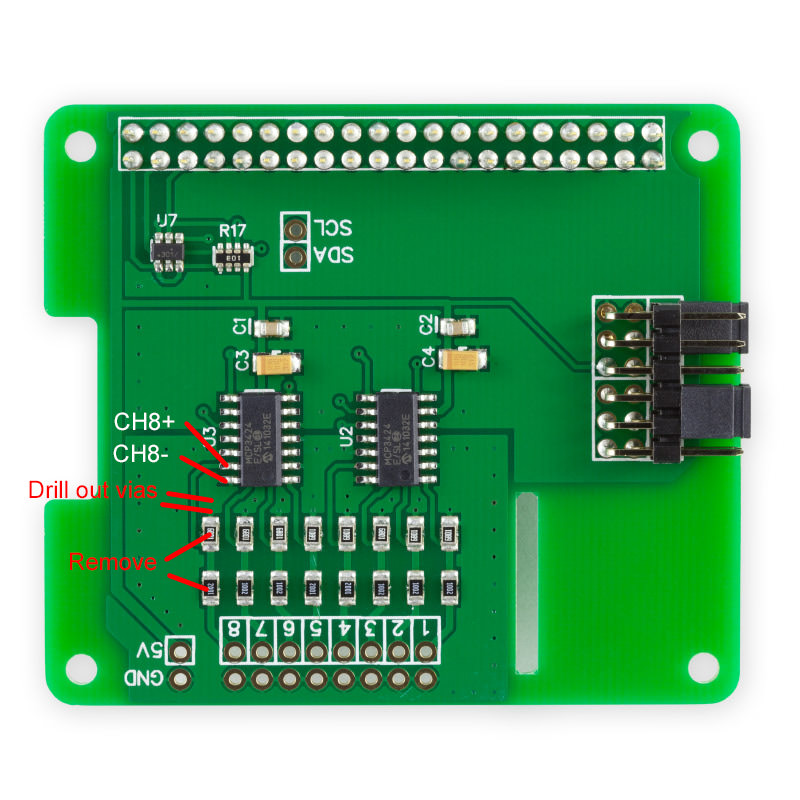Read resistance value
The ADC Pi is an Analogue to Digital converter for the Raspberry Pi
12/12/2017
Posted by:
trayer
I'm working on a projet where i need to read voltage on a raspberry pi. So i bought an ADC Pi Plus and it's perfect, very easy to integrate !
But I've got another need which to read a resistance value.
Is there any way to do it with the ADC Pi Plus ? I don't need a very good acuracy.
I know the lower and high value that the resistance can reach form the documentation, and i want to be able to read it with the ADC Pi Plus.
Thanks in advance for your reply.
Best regards,
Thomas.
12/12/2017
Posted by:
andrew
To measure a resistance value you need to measure the voltage difference across the resistor so you really need a differential ADC like our ADC Differential Pi.
There are two common ways of measuring resistance, using a constant current source and using a Wheatstone bridge. The Wheatstone bridge is probably the easiest to build as you only need three resistors of a known value plus the resistor you want to measure. As you need to measure the voltage across the resistor and not relative to ground the ADC Pi Plus wouldn't be suitable for this.
If you are willing to do some fine soldering and have a small drill then it is possible to modify one of the channels on the ADC Pi Plus to convert it into a differential input. The ADC Pi Plus is basically an ADC Differential Pi with an added voltage divider to make it measure 0 to 5V instead of -2.048 to +2.048V. If you remove the resistor divider and cut the connection to ground on the negative side of the ADC input it can be used to measure a differential input. The photo below shows how you would modify channel 8 to make it a differential input.

You will need to remove the two resistors from the input of channel 8 and drill out the two vias that join the negative side of the ADC input to ground on the back of the PCB. The vias are only 0.4mm in diameter so a 1mm drill will clean any copper out of the via a break in the connection. Once drilled out check the pin marked CH8- with a multimeter to check it is not connected to ground and then solder a pair of wires directly to the CH8+ and CH8- pins on the chip. You can then use our ADC Differential Pi python library to measure the voltage on channel 8. You can use the same library to measure the other channels but you will need to multiply the value by 2.471 to get the correct voltage as the ADC Differential Pi library does not take into account the voltage dividers on the other inputs.
Forum Notice – Closure to New Posts
As part of our compliance with the UK’s Online Safety Act, the AB Electronics UK support forum is now closed to new posts and replies.
We understand the importance of continued support for our products, so if you have a technical query or require assistance, please use the Contact Form or consult our Knowledge Base for helpful articles and documentation.
We appreciate your understanding and continued support.
Note: documents in Portable Document Format (PDF) require Adobe Acrobat Reader 5.0 or higher to view.
Download Adobe Acrobat Reader or other PDF reading software for your computer or mobile device.
